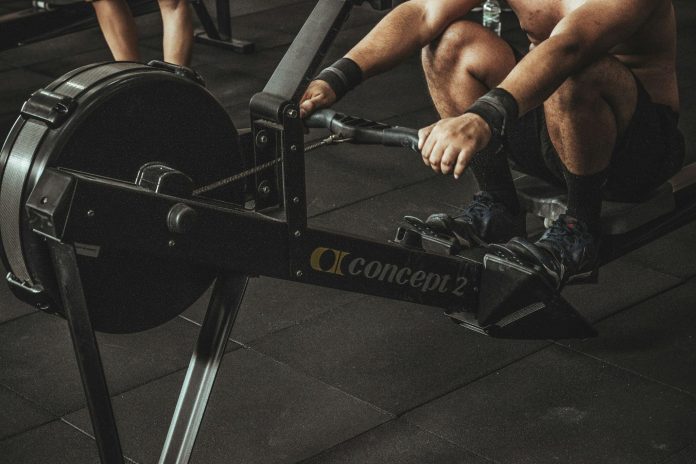Despite being one of the most well-rounded full-body exercises available, rowing is occasionally seen as inadequate compared to more popular routines such as running, cycling, and weightlifting. No matter your fitness level, rowing has several advantages. From beginners who want a low-impact workout to elite athletes who want to get stronger and more resilient, rowing is a great choice. However, is rowing an efficient kind of exercise? Let’s take a look at its pros, cons, and comparisons to other forms of exercise.
The Full-Body Advantages of Rowing
Unlike many other aerobic workouts that target specific muscle groups, rowing works about 86% of your body’s muscles. Each stroke on a rowing machine or in a boat has four distinct phases:
- Catch
- Drive
- Finish
- Recovery
These movements target a variety of muscle groups, including:
Legs: You generate force during the drive phase with your quadriceps, hamstrings, and calves.
Core: Your abdominals and lower back keep your body stable during movements.
Upper Body: Your back, shoulders, and arms help to pull the handle and maintain appropriate posture.
Hence, it is said that rowing improves cardiovascular endurance and muscle strength due to its all-encompassing nature.
Cardiovascular and Endurance Training

Rowing is a terrific cardiovascular workout. It raises your heart rate, increases lung capacity, and boosts overall endurance. Studies demonstrate that repeated rowing training can improve aerobic capacity, allowing people to perform better in other physical activities. Rowing’s rhythmic character also makes it an effective tool for high-intensity interval training (HIIT), which involves alternating between bursts of strong, concentrated action followed by short rest intervals.
Strength and Muscle Development
While rowing is usually regarded as an aerobic activity, it also aids in strength development. The resistance of the rowing machine or water tones the muscles, especially in the legs, back, and arms. Rowing, unlike weightlifting, delivers strength-building advantages without putting excessive strain on the joints, making it an excellent choice for people recovering from injuries or searching for a low-impact activity.
Low-impact exercise that gives high results
One of the primary benefits of rowing is that it is low-impact, which means it is gentler on the joints than high-impact workouts such as running or jumping. Rowing is an appropriate activity for persons who have joint pain, arthritis, or are recovering from an injury. The smooth, fluid motion reduces stress on the knees and hips while delivering a good workout.
Calorie Burning and Weight Loss
Rowing is an efficient calorie-burning exercise that is ideal for weight loss. A 30-minute moderate rowing session can burn between 250 and 400 calories, depending on body weight and intensity. High-intensity rowing sessions can burn even more calories, assisting individuals in achieving the caloric deficit required for fat loss.
Mental Benefits: A Mental Workout
Aside from physical conditioning, rowing has mental health benefits. Rowing can be meditative due to its rhythmic and repetitive nature, which reduces tension and improves attention. It also causes the body to release endorphins, which are natural mood boosters that aid with anxiety and despair.
Rowing Versus Other Popular Workouts
How does rowing compare to other conventional exercises?
Rowing vs. Running: Rowing is a low-impact cardio that involves more muscle groups, and has strength advantages too. Running, on the other hand, is primarily a cardiovascular endurance exercise but can be taxing on the joints.
Rowing vs. Cycling: Both are low-impact routines and good for aerobic fitness, however, rowing is effective on more muscles while cycling works more on the lower body.
Rowing vs. Swimming: While both are full-body, low-impact sports, rowing can be done anywhere i.e, at home or the gym and requires just the rowing machine, making it more accessible to many individuals.
Rowing vs. Weightlifting: Weightlifting is excellent for targeted strength development, whereas rowing combines strength and endurance in one workout. They work great when we combine them.
Potential Drawbacks of Rowing
While rowing provides numerous benefits, there are some potential downsides:
Perfecting the Technique: Proper rowing technique requires time to learn and perfect. Poor form can cause ineffective workouts and even injury.
Expensive Equipment: Rowing machines are pricey and take up a lot of room when compared to other types of training equipment like dumbbells or resistance bands.
Repetitive Motion: Some people may find the rowing motion tedious over time, necessitating diversity in training to stay motivated.
Lower-Body Focus: While rowing works the legs, it does not provide as much lower-body growth as weightlifting exercises or squats or deadlifts.
How to Add Rowing to Your Fitness Routine
To maximise the benefits of rowing, here are a few ways you can use it in your fitness routine:
Low-Intensity Workout: Rowing is a good choice for steady-state aerobic workouts that last 20-45 minutes at a low intensity.
HIIT Workouts: You can do a quick 15-20 minutes of high-intensity rowing workout, which includes sprints (30-60 seconds) followed by gentle recovery periods (30-60 seconds).
Cross-Training: To avoid boredom and to keep things interesting and varied, combine rowing with strength training, yoga, or other workouts.
Rowing Challenges: Set distance or time goals to keep motivated and measure your progress.
So, can we say rowing is a good workout?
Yes, rowing is a very effective workout that provides cardiovascular, strength, and mental health advantages in a low-impact, full-body activity. Rowing can help you increase your endurance, build muscle, lose weight, or simply enjoy a new physical challenge. While it does have a learning curve and requires good technique, the benefits greatly outweigh the disadvantages. If you have access to a rowing machine or water-based rowing chances, they are well worth including in your training program.

